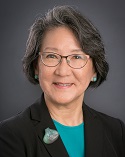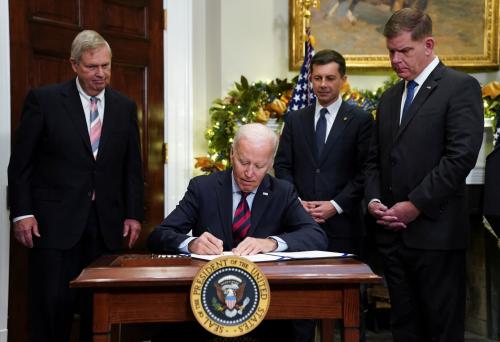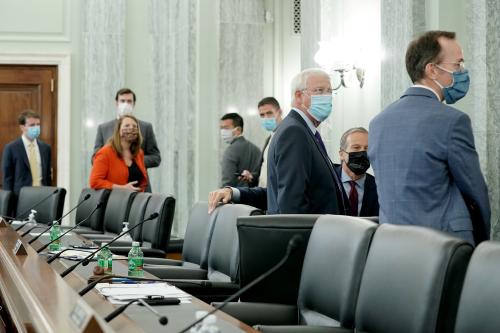This Brookings Center on Regulations and Markets – Fireside chat with Genevieve Shiroma, Commissioner of the California Public Utilities Commission, was recorded on October 29, 2020.
Sanjay Patnaik, director of the Center on Regulation and Markets and Bernard L. Schwartz Chair in Economic Policy Development in Economic Studies, recently sat down with Genevieve Shiroma, Commissioner of the California Public Utilities Commission. Some major areas they covered include the agency’s regulatory authority, regulations of autonomous vehicles, and what other initiatives the Commission is currently working on. Here are some highlights:
Where does the Commission derive its regulatory authority from?
CPUC has a one-hundred-year history of regulating utilities and transit across the state of California. Founded in 1911, the agency derives its regulatory authority directly from the state constitution. Originally intended to regulate railroads, CPUC now regulates energy, water, communications, and transportation, with safety as a core agency priority.
How does CPUC approach the regulation of autonomous vehicles?
CPUC has been highly involved in regulating pilot testing for autonomous vehicles (AVs) in California. At the time of the interview, the agency was preparing a new decision on regulating autonomous vehicles—which was released on November 19th—and emphasized the agency’s focus on safety and accessibility. The decision creates two new AV deployment programs that will allow participating companies to offer paid passenger rides in autonomous vehicles. CPUC will closely monitor the safety, accessibility, and environmental impacts of the new programs.
How does the CPUC regulate ridesharing companies?
Over the past few years, CPUC has regulated the rapid expansion of transportation network companies (TNCs or ride-sharing companies). CPUC requires TNCs to share anonymous, granular data with the agency and local governments, which has aided city planning efforts as California adapts to changes in car ownership rates due to the rise of ride-sharing. CPUC also recently began implementing a new program dedicated to regulating accessibility among TNCs in response to the passage of the 2018 TNC Access for All Act.
What work does the CPUC do related to climate change?
The agency is currently gathering data on how the Green Mile Standard—a law passed through the California State Legislature in 2018–is impacting air pollution. Commissioner Shiroma shared that the statute required CPUC to work with the Air Resources Board to reduce greenhouse gases (GHG) and air pollution from TNCs. The agencies are still in the critical data collection phase.
How has COVID-19 affected CPUC’s work?
COVID-19 has forced CPUC to be more flexible. The agency works with many local jurisdictions across the state, and California has required local authorities to adhere to the most stringent safety requirements applicable to them. Whether it is TNCs, light rails, or subway systems, all entities are required to follow local Department of Health and CDC pandemic requirements. The state has also set moratoriums on any water disconnections until April 2021, giving residents more secure access to their utilities during the crisis.
To hear Commissioner Shiroma’s complete comments, watch the fireside chat here:
Cayli Baker and Kelly Kennedy provided editorial assistance for this blog post.
The views expressed herein are those solely of the speakers and do not reflect the position of The Brookings Institution.




Commentary
Regulating autonomous vehicles and ridesharing: Lessons from California
December 17, 2020